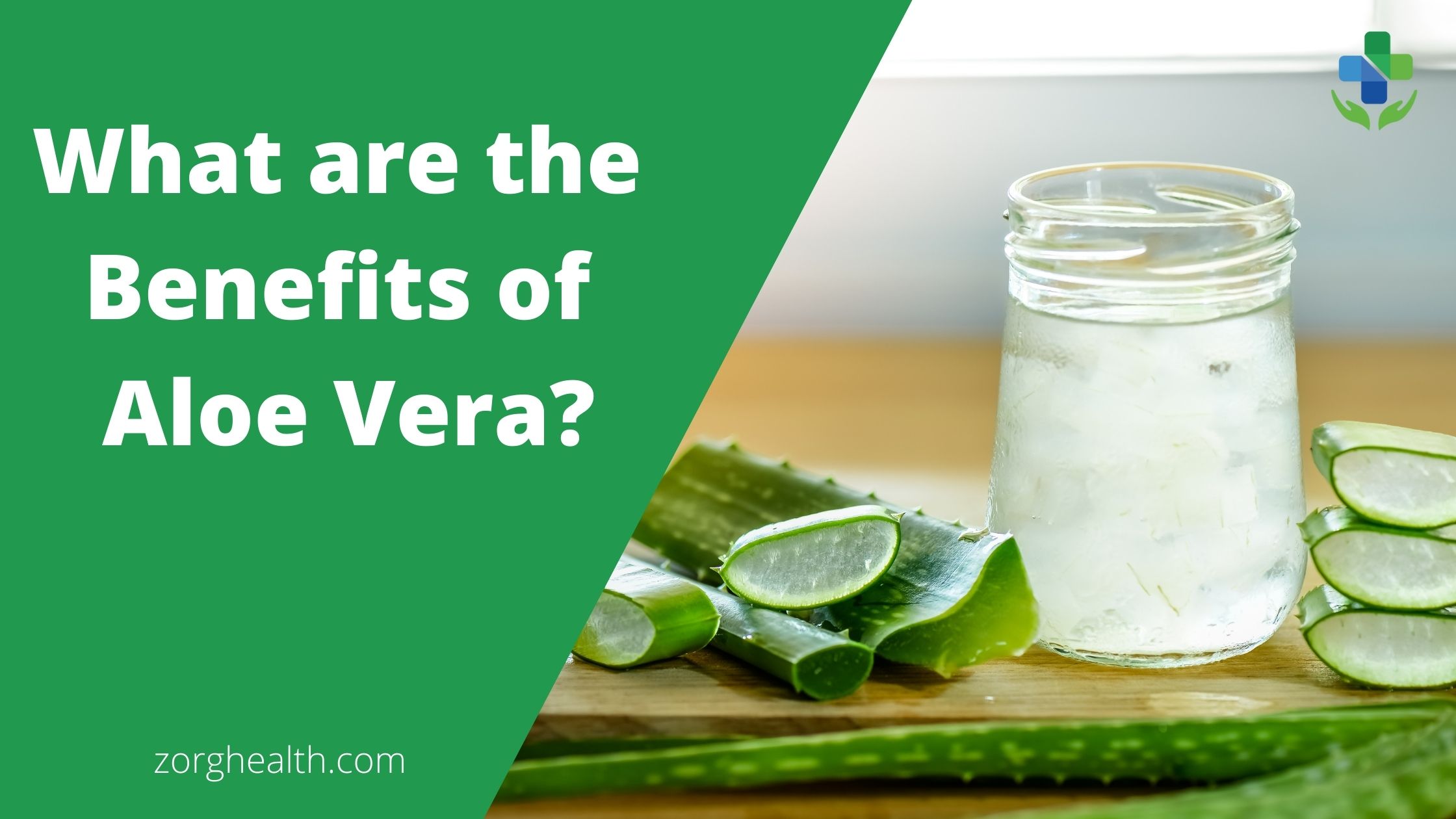Aloe vera is a barbed juicy plant—which is very popularly known as the “plant of immortality” and this is because it has the potential to live and grow even without soil. So, let’s see what are the benefits of aloe vera.

For hundreds of years now, humans have long known aloe vera’s natural medicinal benefits to help treat everything from skin issues to digestive problems. It is not only prized in the health industry for its healing and hydrating effects but these days aloe has the entire beauty and cosmetic industry behind it. You’ll find aloe vera gel and juice in a range of personal care products from moisturizers, toners, shampoos, and conditioners to aloe vera-based soap, fragrance, shaving cream, and suntan lotion.
What are the benefits of Aloe Vera – TOC
Overview of the Aloe Vera Plant
Aloe vera—a short-stemmed wonder plant—has more than 450 species that naturally grow in hot and dry tropical climates around the world. Many people even grow their own for decorative purposes as well.
Aloe vera with its thick, pointed, and fleshy green leaves containing slimy water-filled tissue that is the ‘aloe pulp or gel’. Aloe vera is an interesting plant, where leaves are comprised of three parts: the skin, the gel, and the latex. However, it is the gel that contains most of the valuable bioactive compounds in the plant, including vitamins, minerals, amino acids, enzymes, and antioxidants. Studies into the properties and actions of aloe vera have confirmed that the aloe vera plant contains several nutrients.
These days you can use the gel directly from the aloe vera plant or buy a bottled variety from a pharmacy. While most people typically apply the gel to their skin, it’s also safe to eat when prepared right. It can also be taken orally as a supplement.
What are the benefits of aloe vera?
Aloe vera is popular for its anti-inflammatory and antibacterial properties making it ideal for many potential uses and specific treatments. It also contains powerful antioxidants that fight free radicals that cause cell damage. Studies show its various health benefits as well.
Following are the key benefits of using aloe vera:
Skin and Face
- Treats skin conditions like minor cuts, wounds, acne, sores, dry skin, dandruff, etc.
- Alleviates itchiness and inflammation from skin diseases
- Protects the skin from harmful UV radiation of the sun
- Soothes inflamed skin, burns, and frostbite
- Exfoliates dead skin including around the eyes
- Keeps your skin moisturized, hydrated, and soft, and tightens the pores
- Reduces the appearance of wrinkles and fine lines
- Prevents new signs of aging around the eyes
- Makes skin appear smoother and more elastic
- Lightens skin puffiness and swelling around the eyes
- Cleanses the face when used as a face wash or toner.
Oral Care and Gums
- Relieves inflammation related to gum disease.
- Treats gingivitis, canker sores, dental plaque, and other oral issues.
- Maintains oral hygiene and dental care.
Hair and Dandruff
- Strengthens and repairs hair strands
- Makes the scalp soft and healthier
- Moisturises hair and scalp
- Improves damaged and dry hair
- Calms itchy dry scalp
- Reduces scalp dandruff
- Resolves scalp inflammation
- Promotes hair growth
General
- Accelerates healing and eases pain from inflammation
- Eases bowel issues and digestion
- Lowers blood sugar levels
- Boosts digestion and removes toxins from the body
- Treats effectively many fungal and bacterial infections
- Can be added to a variety of homemade recipes like smoothies and salsas
How to Extract the Aloe Vera Gel – Easy Steps
To extract the gel from the aloe vera leaves, follow these given steps:
- Use a sharp knife to cut a green leaf near the root of the plant
- Rinse the leaf and lightly pat dry
- Hold the leaf upright (with the cut side facing down) and let the yellow fluid (latex) drip out
- Cut away the top layer of the leaf and spiky ends from all sides. Drain and discard the latex again, if needed.
- Trimming away the edges of the aloe vera leaf is an easy method to extract the pulp/juice
- Scrape the gel using a spoon from the remaining layer of plant leaf
- Wash the gel carefully to clean it of any residue, dirt, or debris
Once the aloe vera gel is harvested, you can store it in a sealed container in the refrigerator for about a week. You can also freeze the aloe vera gel in ice cube trays.
Safety Tips for using Aloe Vera
Aloe vera gel is generally considered safe and usually has little cause for concern when used. However, it may not suit everyone. Some people may be sensitive or have an allergic reaction to the plant. Using it too often might give unpleasant effects. Also, it’s not always advisable to apply aloe vera, in fact, for certain skin types, too much aloe vera could make skin drier or too oily.
Before using aloe vera topically, do a patch test by rubbing a small bit of aloe vera on the inside of your wrist. Wait for a few hours to notice a reaction, like redness, itchiness, or burning. If you don’t observe any reaction, it’s likely safe to use.
Eating aloe vera latex (a yellow substance that is found inside the leaf) may have potential risks.
Consult the doctor before using aloe vera in the following cases:
- If you are pregnant or think you may be pregnant, also, if you are a mother who is breastfeeding.
- If you are diabetic or have heart conditions.
- If you have digestive disorders (inflammatory bowel disease or Crohn’s disease).
- If you feel stomach cramps, kidney problems, irregular heartbeat, and muscle weakness.
- If you are allergic to garlic or onions.
- If you have deep cuts or severe burns.
- If you taking specific medications.
The Bottom Line
Aloe vera is a popular traditional medicinal plant that people have used for centuries. The clear jelly-like substance of this plant in its long, thick leaves is rich in enzymes, vitamins, minerals, and amino acids.
Aloe vera is not just nice to look at but is praised as a popular herbal remedy to treat several skin ailments. Although it is best known as a treatment for burns and wound care, research has shown that it may have many other benefits.
It’s important to mention that a person should always speak to a doctor before using aloe products to treat a condition.
